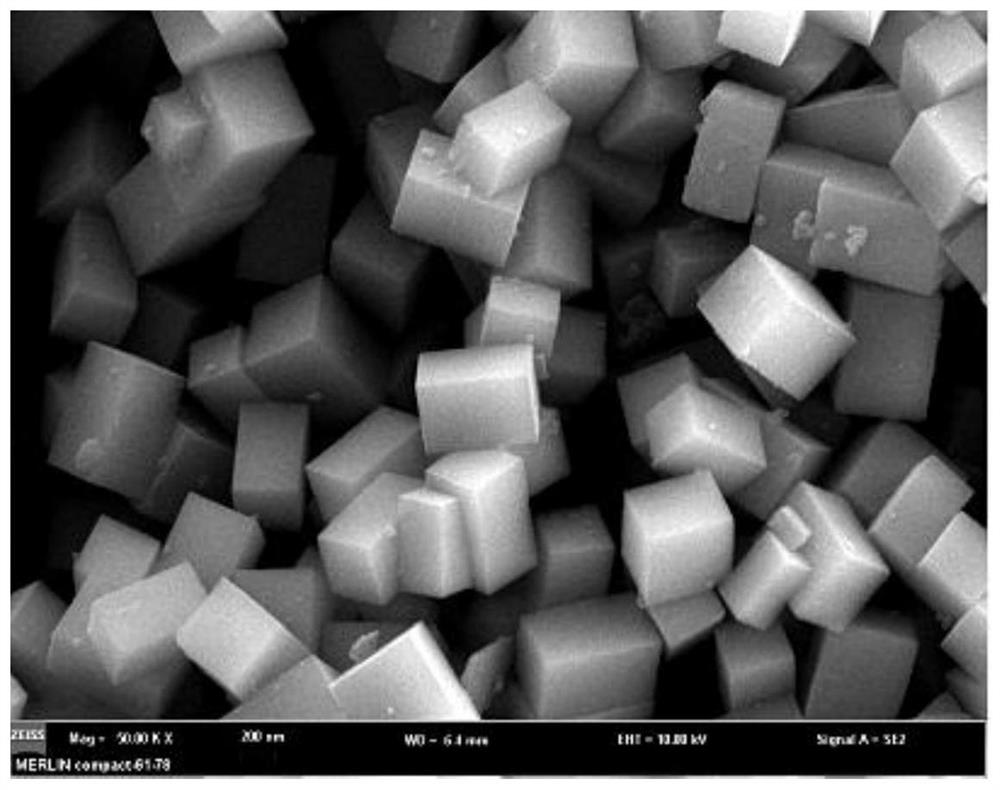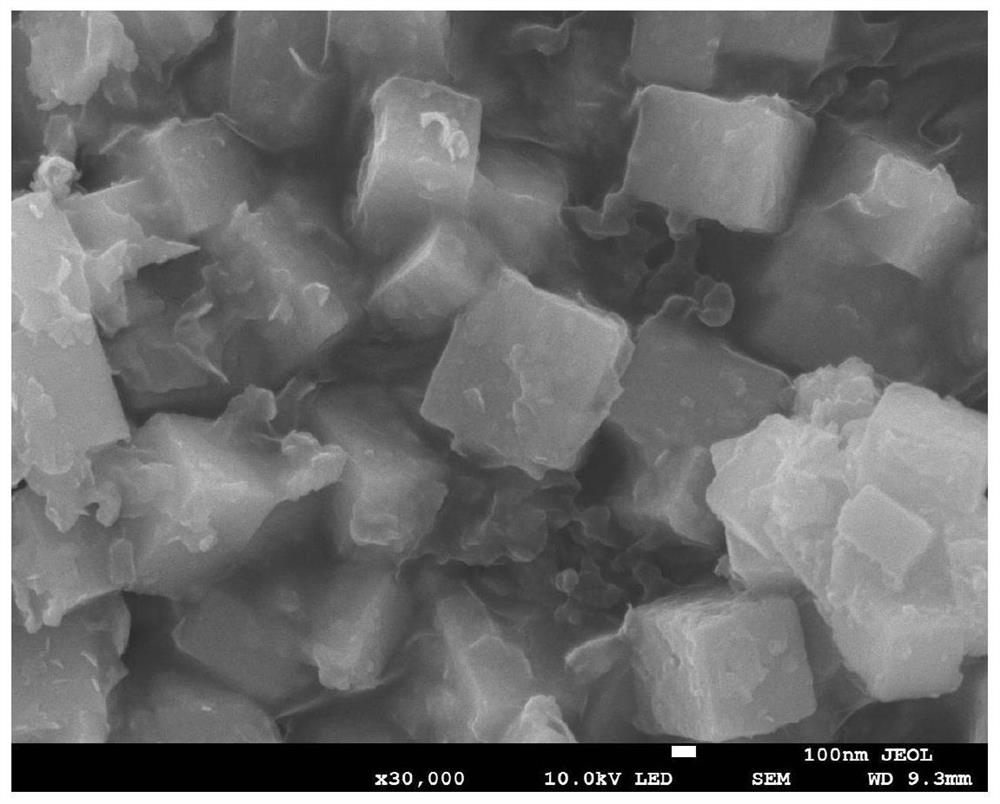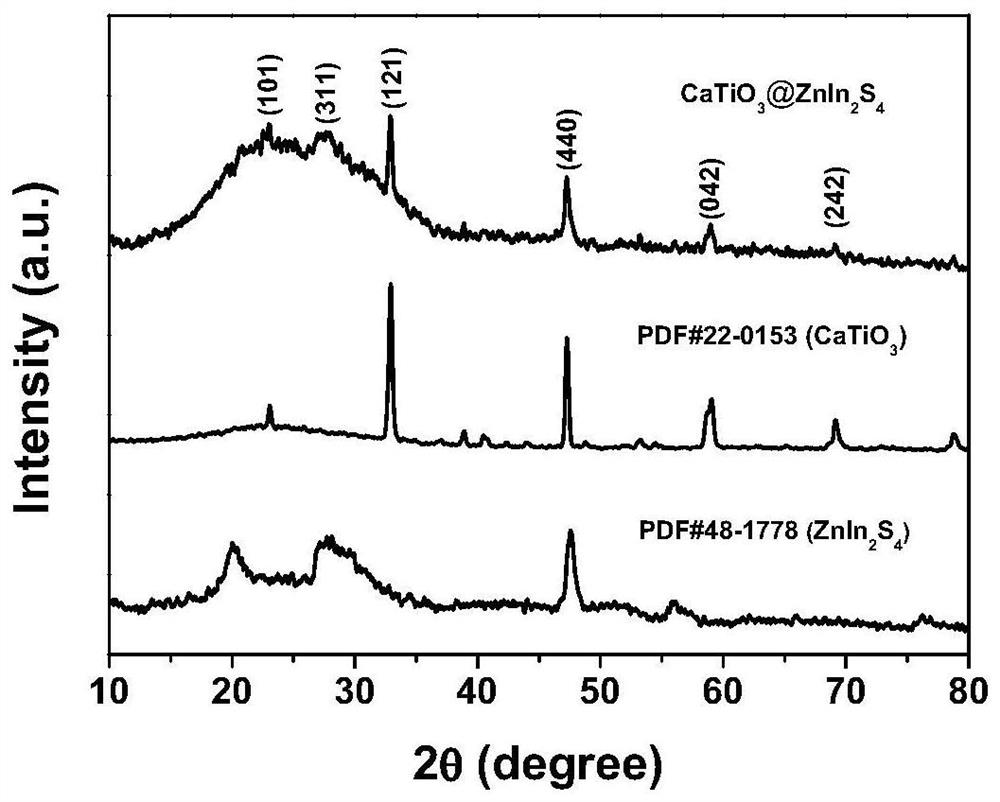catio 3 @znin 2 the s 4 Nanocomposite materials and their preparation methods and applications
A nanocomposite material, znin2s4 technology, applied in the field of photocatalysis, can solve the problems of reduced solar energy utilization, low visible light absorption, large forbidden band width, etc., to achieve the effects of easy purchase, abundant resources, and easy operation
- Summary
- Abstract
- Description
- Claims
- Application Information
AI Technical Summary
Problems solved by technology
Method used
Image
Examples
Embodiment 1
[0027] (1) Put 0.25mmol calcium nitrate in a beaker, add 5mL deionized water and stir for 10min to form a uniform solution, then add 0.84mmol tetrabutyl titanate and 0.84mmol polyethylene glycol-200 dropwise to the solution, stir 30min, and then add 1.68×10 -4 1 mmol of sodium hydroxide aqueous solution, stirred evenly, moved the solution to a 50mL stainless steel reaction kettle with a polytetrafluoroethylene liner, and reacted at 200°C for 17h; after natural cooling, the reaction solution was centrifuged, washed, dried, and collected , to obtain hollow CaTiO 3 cuboid;
[0028] (2) Take 10.5 mg of the hollow CaTiO obtained in step (1) 3 The cuboid was moved into an oil bath, and 37.8 mg of zinc chloride, 61.95 mg of indium chloride, and 42 mg of thioacetamide were heated to 80 °C at a rate of 2 °C / min in an air atmosphere, and the oil bath was stirred for 3 hours to obtain CaTiO 3 @ZnIn 2 S 4 nanocomposites.
[0029] For the hollow CaTiO prepared in step (1) 3 The cub...
Embodiment 2
[0032] In CaTiO 3 @ZnIn 2 S 4 No addition of hollow CaTiO during the preparation of nanocomposites 3 Cuboid, all the other reagent consumptions and operation steps are with the step 2 of embodiment 1.
Embodiment 3
[0034] In CaTiO 3 @ZnIn 2 S 4 No addition of ZnIn during the preparation of nanocomposites 2 S 4 , all the other reagent consumption and operation steps are the same as step 1 of embodiment 1.
[0035] Carry out XRD test to the product that embodiment 1,2 and 3 obtains, test result sees image 3 . As shown, the CaTiO 3 @ZnIn 2 S 4 Comparing the X-ray diffraction peaks of nanocomposites with those of a single material, it can be seen that CaTiO 3 with ZnIn 2 S 4 Successful recombination, the diffraction peaks match the corresponding crystal planes and there are no impurity peaks.
[0036] The specific analysis is as follows: the strong diffraction peaks at 2θ = 23.1°, 32.9°, 59.0° and 69.5° are consistent with the perovskite CaTiO3 The (101), (121), (042) and (242) crystal planes (PDF#22-0153) match. The strong diffraction peaks at 27.8° and 48.4° are consistent with the ZnIn 2 S 4 The (311) and (440) crystal planes (PDF #48-1778) match. According to these conclu...
PUM
| Property | Measurement | Unit |
|---|---|---|
| particle size | aaaaa | aaaaa |
Abstract
Description
Claims
Application Information
 Login to View More
Login to View More - R&D
- Intellectual Property
- Life Sciences
- Materials
- Tech Scout
- Unparalleled Data Quality
- Higher Quality Content
- 60% Fewer Hallucinations
Browse by: Latest US Patents, China's latest patents, Technical Efficacy Thesaurus, Application Domain, Technology Topic, Popular Technical Reports.
© 2025 PatSnap. All rights reserved.Legal|Privacy policy|Modern Slavery Act Transparency Statement|Sitemap|About US| Contact US: help@patsnap.com



